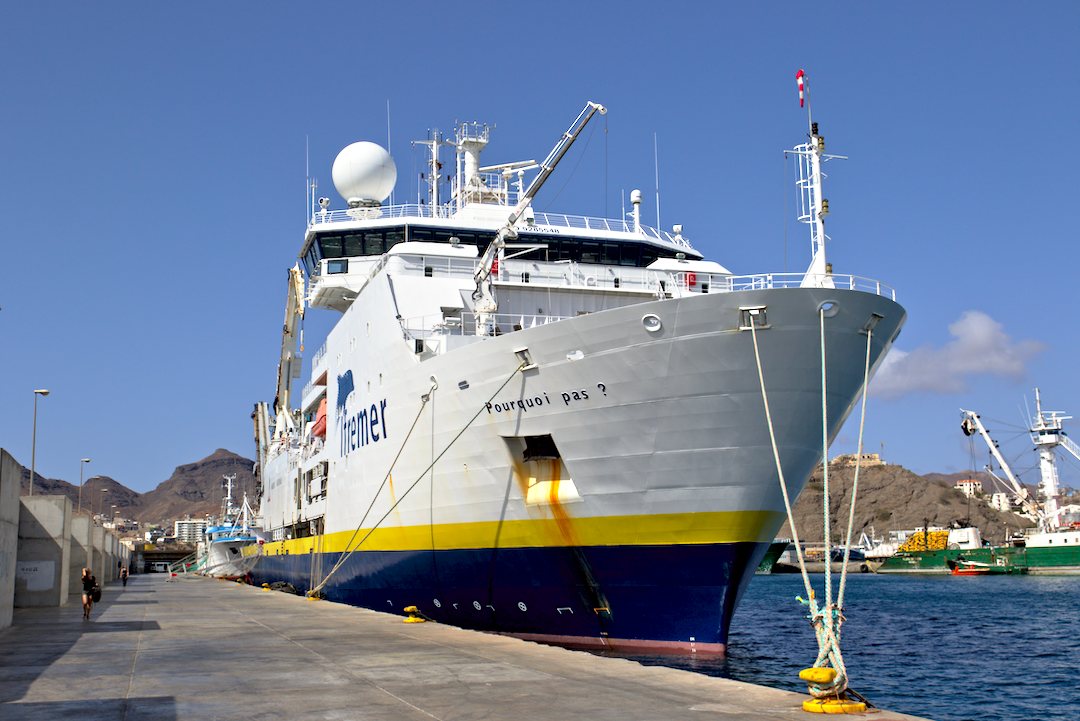The fourth dive took place on July 24th. The profile is within the deepest part of the northern section of the transform fault. We had two objectives: (a) first to look for a potential contact between mantle lithologies such as peridotites and a sheeted dyke complex or old oceanic lava flows (observed during dive 2) and (b) observe a flat structure within the slope that we called “Juliet’s balcony” which could represent an active deformation zone. The dive was launched at 7h22 TU with an arrival at 9H06 TU to an immersion of 5655 m.
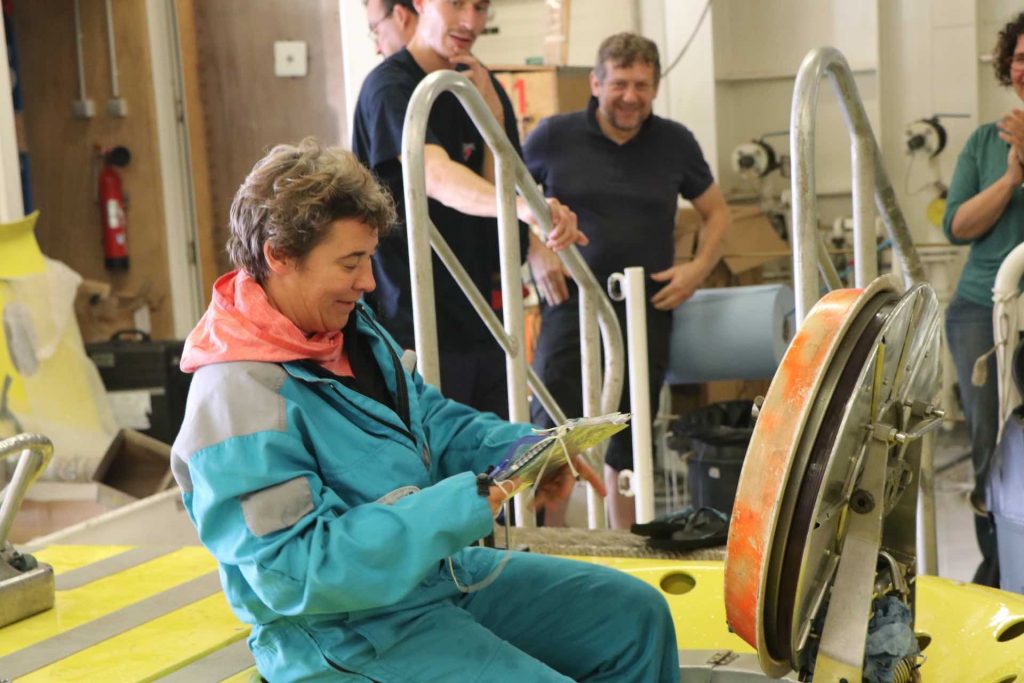
The passenger, Sidonie Révillon, back from her dive. P. G. Ceuleneer. © Ifremer 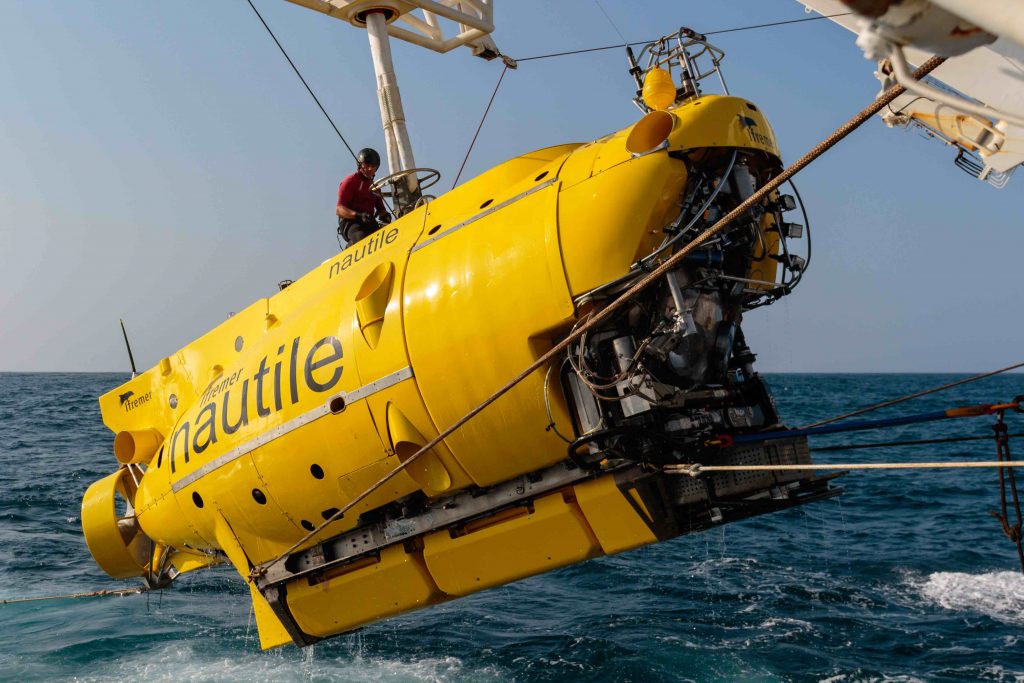
The Nautile is lowered into the water. P. C. Hamelin. © Ifremer 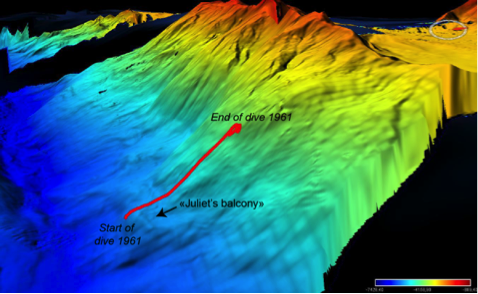
The track of the dive on the deepest part of the wall.
The area is old and therefore with thick sediment cover. We mainly observe blocks of variable sizes and shapes and which lithology is difficult to recognise. These blocks may have collapsed from above. Finally these are basalts (photo 1). At 5663 m depth we sample a weakly consolidated breccia before getting back to scattered basaltic blocks. « Juliet’s balcony » is finally covered by a thick sediment layer with no outcrop or visible structure.
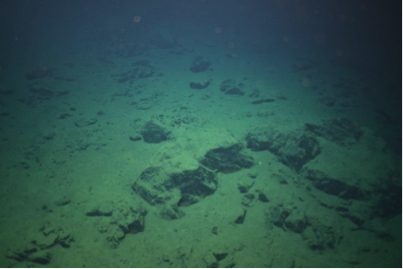
Scattered basaltic blocks.© SMARTIES cruise 
Basaltic blocs, maybe flows. © SMARTIES cruise 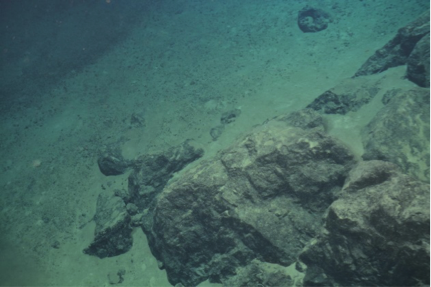
Basaltic blocks, maybe dykes. © SMARTIES cruise
Then and until the end of the dive at about 4200 m we observe and sample basalts either as apparently flows (photo 2) or may be dykes (photo 3). We left the seafloor at 16 h at 4179 m depth. In total 15 samples were taken: 13 old and altered basalts and 2 basaltic breccias.
By S. Révillon
